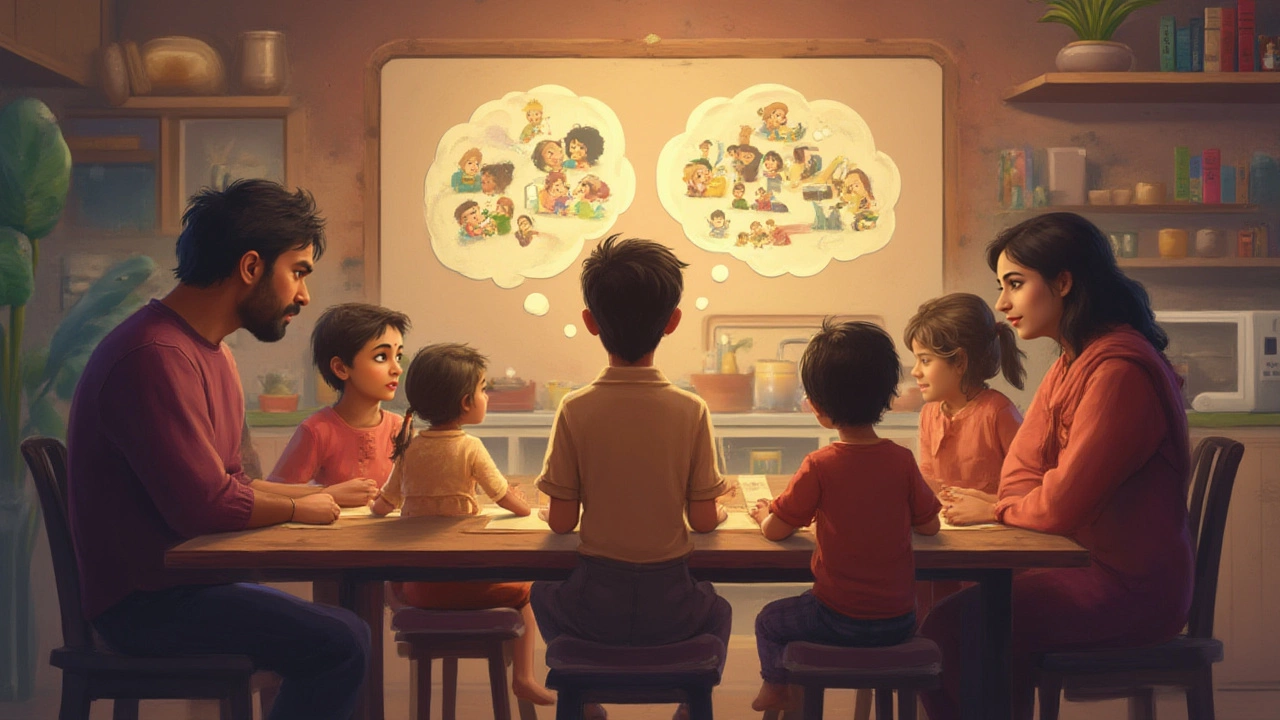What if the choice of your kid’s school syllabus could boost their confidence or stress them out? For parents, there’s real anxiety wrapped up in this. The Indian education world isn’t straightforward—every board promises something different, every friend, teacher, and neighbor has opinions, and the future can feel like it’s hiding behind acronyms (CBSE, ICSE, IB, and State Board). Here’s the deal: the answer isn’t one-size-fits-all. So, let’s strip away the noise and look at what makes each syllabus tick—what works, what doesn’t, and how to actually match it to your kids’ needs. Some facts will surprise you, and there are real trade-offs nobody usually spells out.
How India’s Major Syllabuses Differ
You’d think a syllabus is just a list of topics, right? Not so simple. In India, each board—CBSE, ICSE, IB, and State Boards—crafts its syllabus with a whole philosophy behind it. The Central Board of Secondary Education (CBSE) is infamous for nailing competitive exams—over 70% of students sitting for the IIT JEE and NEET come from CBSE schools. It’s built to help with standardized tests and has a reputation for being student-friendly. The Council for the Indian School Certificate Examinations (ICSE) is all about depth—English is king here, and students come out solid in language skills and broad-based learning. The International Baccalaureate (IB) is still the new kid in most Indian cities, but its hands-on, project-based learning, and the heavy international flavor make it appealing for expats and folks planning to send their kids abroad. State Boards are a mixed bag—each state runs its own syllabus, usually in multiple languages with local flavor, and often lighter on competition but heavier on accessibility.
The table below spells out some core differences:
| Syllabus | Main Focus | Language | Popularity (Schools) | Exam Style |
|---|---|---|---|---|
| CBSE | STEM, Competitive Exams | English/Hindi | Over 24,000 | Objective & Application-based |
| ICSE | Literature, Arts, Science | English | ~2,500 | Theory-heavy, Analytical |
| IB | Global Skills, Research | English/Other | ~200 | Projects & Assessments |
| State Boards | Regional Content | Regional/English | Over 120,000 | Conventional Exams |
What really separates them? CBSE keeps things straightforward, perfect for kids who need structure. ICSE layers in lots of projects and expects strong English, almost like mini-researchers in training. IB teaches kids to question everything and dive into projects—they’re making presentations in primary school. State Boards? Practical, accessible, and attuned to the local context, which is handy if your kid needs to master a regional language or doesn’t plan to move cities often.
What Kids Really Need in a Syllabus
Forget what the neighbors said—kids aren’t carbon copies. What works for your cousin’s daughter might make your child miserable. When you pick a syllabus, think about your child’s needs, your family’s lifestyle, and future plans. Kids who love exploring, tinkering, and debating may feel cramped in a rote or rigid structure. If you picture your child acing medical or engineering entrances, CBSE’s alignment with those exams practically hands them a map. If your kid lights up writing essays and giving presentations, ICSE or IB gently push them in that direction. State boards are often lighter academically, leaving plenty of time for sports, music practice, family business, or community involvement.
Does your family move every few years? Choosing CBSE saves a ton of headaches—most cities have a CBSE school, so transitions are smoother. Dreaming of top colleges abroad? IB’s international currency is hard to beat—over 120 countries recognize the IB diploma. Then again, if “home” is a small town, State Boards might prep your child best for local entrance exams and real-world life nearby. So the true question isn’t just “Which syllabus is best?” but “Which syllabus is best for your kid and your future?”
The pace matters, too. ICSE piles on at the start but evens out in high school. CBSE feels easier in the early classes but ramps up fast. IB starts with curiosity and keeps it burning. State Boards are usually steady but can lag in new teaching techniques. Salaries for IB teachers are often 2-3 times higher than state board schools—good teachers know where they’re wanted. But more money means higher fees, so budget is another thing to weigh.

Pros and Cons: Honest Trade-Offs
No syllabus is flawless. Each one comes with clear upsides and some hidden downsides. CBSE is predictable (great for test-takers) but can feel a bit dry—there’s less room for creative writing or deep dives into the arts. ICSE students develop killer vocabularies, but parents sometimes groan about too much homework and demanding exams. IB’s real-world skills and global focus sound wonderful, except when your wallet gasps (fees can top ₹10 lakh a year). Plus, not every city even has an IB school! State Boards win on cost and local relevance, but some students struggle if they later need to compete in tough national-level tests.
Here are quick tips to make choices less stressful:
- Match syllabus to your child’s interests, not just what’s trending.
- Check if schools teach practical life skills, not just text facts.
- Ask about the school’s reputation for student support and activities—not just rankings.
- Remember: a syllabus can support, but not replace, good teaching and happy learning.
- If your child might switch boards in middle or high school, look into credit transfers and syllabi overlap in advance.
- If you want fluency in English, ICSE and IB usually put heavier emphasis there.
- If local language and culture are important, state board syllabi let kids keep strong roots.
The differences aren’t just about rote v/s creativity, or marks v/s fun. For example, an NTA study (2023) showed 65% of top-scoring IIT JEE students belonged to CBSE schools. Meanwhile, alumni from IB schools are twice as likely to land in U.S. and U.K. universities—these aren’t small outcomes.
What Future Trends Are Shaping the Choice?
Today’s best syllabus may not stay ahead for long. Technology, changing entrance patterns, and Indian parental aspirations are twisting things up. Kids in 2025 have access to online resources that make textbook-only learning feel ancient. CBSE has started sprinkling coding (Python and AI modules from class six!), while the IB integrates service projects and digital portfolios. ICSE has reformed its math and science curriculum to fight back against the "too much theory" stereotype. Progressive state boards like Kerala push child-centric learning, but others lag, still shaped by ancient exam blueprints.
Most parents don’t realize how fast teacher training is shifting—CBSE and IB in particular require regular upskilling, so their teaching isn’t stuck in the past. Career trends shape syllabus choice, too. Kids gunning for UPSC or state government jobs often do better when familiar with the local State Board content for prelims. Niche fields like liberal arts, design, or research can see kids from IB and ICSE schools at an advantage, thanks to their project-heavy and broad-base approach.
COVID changed things, too. When online classes became normal, families saw the cracks in rote-based curriculums—kids tuned out easily. Syllabuses pushing active, project-driven learning (hello, IB and some ICSE schools) saw higher student engagement. Some CBSE and state board schools learned fast, building in videos and interactive tools to retain kids’ interest.
One practical tip? Visit a few schools, attend sample classes if allowed, and talk to kids and parents. Look beyond fancy websites—see how happy kids seem in class. Don’t get hung up on board reputation over actual teaching quality and infrastructure. And if you’re thinking ahead to jobs, realize the world now predicts AI and remote work will matter even more—syllabuses giving space to coding, creativity, teamwork, and critical thinking have a real leg up.
The most important thing? Kids learn best when the syllabus fits them—not the other way around. So talk to teachers, trust your gut, and remember that most career paths leave space for smart, happy kids, no matter whether they come from CBSE, ICSE, IB, or state board backgrounds.

